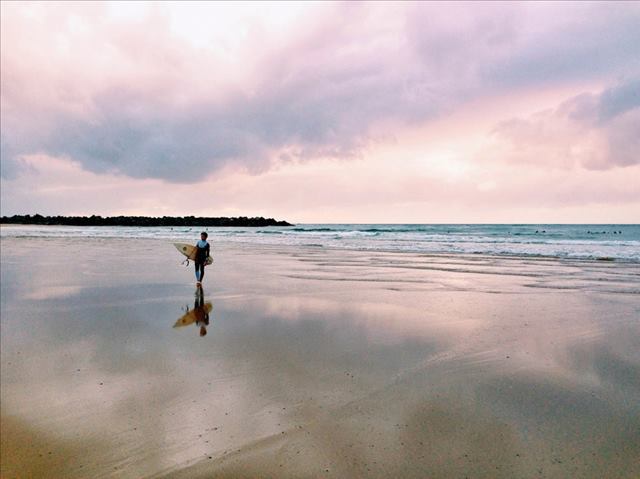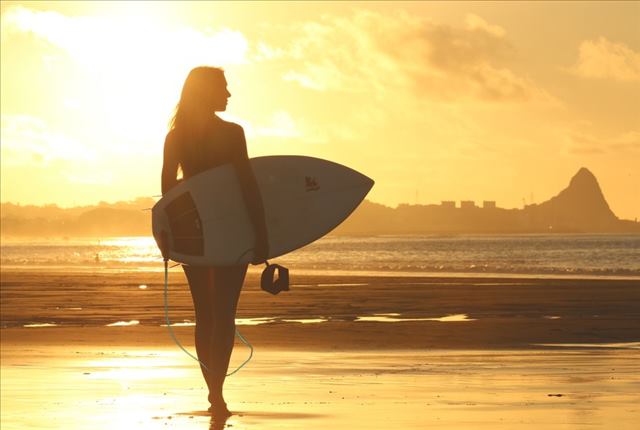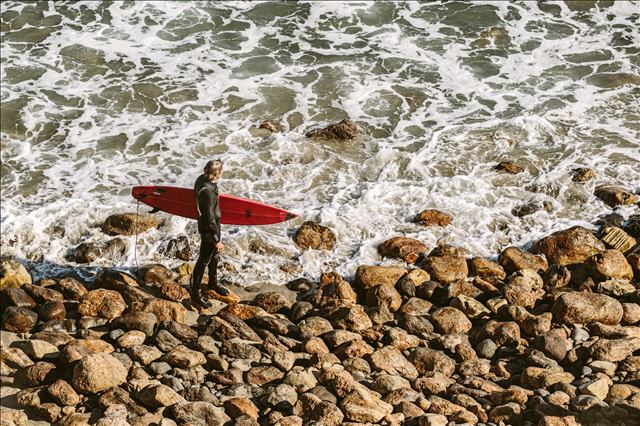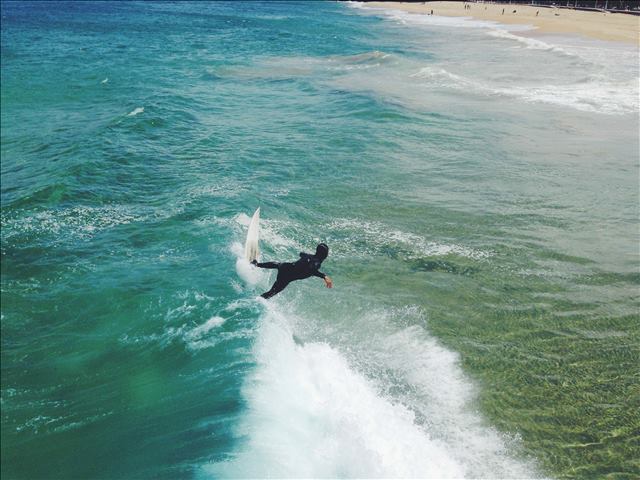Surfing News – For many people a trip to Costa Rica means one thing to try surfing for the first time. But what do you need to know for your first Costa Rica surfing trip?
Is surfing something you’ve always wanted to try, but you weren’t too sure you’d be good at it? Or maybe you were afraid you would fail? Don’t worry, we’ve got your back, future surfer!
BookSurfCamps.com has 25 tips for beginner surfers that will help you start your surfer life and during your first few attempts at surfing. We say attempts because they will most likely be just that: attempts. Aside from these useful tips, we’re here to also remind you to expect to put in some work! Nobody ever jumped on a surfboard and surfed a big wave. Just like any other sport, you need to put in some time and effort to learning and becoming better at it. But don’t let this scare you, surfing is one of the most beautiful sports out there and a wonderful way to relax, work out, and meet great people. If you follow these tips, you’ll be on your way to becoming a great surfer!
Before You Get on in the Water 
Don’t Learn to Surf by Yourself
No matter how easy you think it looks, never, ever approach surfing by yourself. Either get an experienced friend to teach you or go to a surf camp, in order to avoid injuring yourself or even putting your life in danger.
Choose a Good Teacher
If you decide to take some surf lessons, research the teacher in advance. Make sure they are experienced and have good reviews. Sometimes, a good teacher won’t just teach you how to surf, but they’ll inspire you and make you love surfing.
Use a Big Surfboard
This is one of the best beginner surfing tips you could ever follow. A large board will offer you a bigger surface to learn on and they’re also much better floatation devices.
Soft-Top Surfboards Also Help
For some beginners, soft-top surfboards also help with the learning process. A large and soft-top surfboard is going to be gentle on your feet and posterior. Make no mistake, at the beginning, you’ll be spending a lot of time sitting on it, rather than standing!
Always Use a Surf Leash
This one is a very important safety requirement, not just a cool tip! It will take you a while to get used to it, and it will get in your way a few times, but a surf leash can potentially save your life, so make sure you are never without one!
Do Some Light Exercises
It is essential that you do a little warm up before you enter the water. Stretching out your muscles and tendons will decrease the chances of muscle cramps and it will also increase your heart rate, thus oxygenating your blood and pumping you up for the action!
Use a Beach for Beginners
Using a beach that is appropriate for beginner surfers is crucial to your surfing success. Learn to surf on a beach known for good, steady waves and the whole learning process will be smoother and you’ll be upgrading your beach in no time!
Spend Some Time on Dry Land First
Now that you’re at the beach, don’t rush in the water. Spend some time on the beach and do your light workout. Go through all the moves you plan doing in the water. Check your costume, your leash, and you board, and also…
Pay Attention to the Water
Before you make your way into the water, look at the waves and study them. See how and where they break. Keep your eye on the other surfers and see what they do. You should do this every single time before you go into the water, not just as a beginner surfer.
Don’t Be Afraid
We know that learning new stuff can be quite overwhelming, but take a few deep breaths, even do some light meditation, and center yourself. Remember that this is something you want to do and something that you will most likely enjoy doing for a long time!
In the Water
Pace Yourself
Once you get into the water, you will need to pace yourself. We know how excited you may feel, but if you don’t pace yourself, you can risk injury! Remember, you have all the time in the world to surf!
Start Small
We know this may be a commonsensical advice, but it needs to be said: start small! Tackle small waves before you attempt larger ones. Even though you may feel ready, unless your teacher says you’re ready, you’re not! Also, don’t even dream of tackling big wave surfing, until you’ve mastered regular surfing.
Don’t Get Tangled with the Big Dogs
This advice ties in with our previous one: don’t get tangled with the big dogs, which means pretty much to stay away from where the experienced surfers are surfing. As a beginner, you’re prone to making lots of mistakes, and you want to avoid getting in people’s way, causing trouble.
Practice Sitting
As weird as it may sound, sitting on a surfboard, while in the water, isn’t the easiest, nor the most comfortable thing in the world. You can either sit on the surfboard with your feet out of the water, which is not so comfortable, but safe; or you can dangle your feet in the water, which offers a lot more stability, but then you’re a bit more open to ocean wildlife. Which brings us to our next tip…
Master the Prone Position by Heart
The prone position is something you will need to master. First, you need to get comfortable in it while on dry land. Lie on your surfboard, balanced and centered. Feel the surfboard, move around and try to master it before you venture out into the water.
Practice Your Pop Out
Once you got the prone position, you will need to learn how to pop out. The pop up from prone position should be swift and seamless. Think of push-ups, as the two are very similar. Practice while on land and in the water.
Keep Your Feet Moving
While in the water, you need to learn to keep moving your feet. Shuffle them, move them around, while swimming or on the board, just don’t let them dangle away as if they weren’t attached to your body. If you keep moving them, the chances of being stung, bit or something along those lines is reduced.
Exercise Your Paddling
Paddling is another thing you will need to practice until you get it right. The key is to find a rhythm and to keep it. This also requires you to be in shape, because it will be quite exhausting the first few times.
Learn to Avoid Nose Dives
Before anything, know that you will nose dive. Every surfer has done it, and you will also do it! In order to avoid nose dives as much as possible, it is really important to learn how to position your surfboard to the waves. Talk to your teacher about nose dives for more information.
Get Used to Wipeouts
If there’s one certainty when learning to surf, it’s the fact that you will be involved in a lot of wipeouts. You will fall, and fall, and fall… and then you’ll fall some more. The waves will knock you down, you’ll get confused, and frustrated, and you’ll even get some bruises. All you need to remember is that it’s all part of the game.
Don’t Bend Your Back
When you’re on the wave, it is imperative that you bend your knees and not your back. If you bend your back, you’ll not just lose your balance mush easier, but you’ll also look like you don’t know what you’re doing.
Learn How to do Wipeouts
That being said, now that you know that you will go through some wipeouts when learning how to surf, it’s really important to learn how to fall. While you never know how a wave can knock you down, you can learn how to fall into the water. An instructor is the right person to teach you how to fall and hold your breath, when to surface, and when to stay under.
Stay Perpendicular to the Whitewater
This is probably one of the most useful tips you will ever need! When a breaking wave is ahead of you, then you can duck under it or go over it. No matter which one you choose, you need to stay perpendicular to the whitewater, the part of the wave that is breaking (which is white, hence its name). If you don’t, then you will be pulled under the wave and dragged to the shore.
Listen to Your Body
Whatever you do, we urge you to listen to your body. If you are tired, bored or you simply aren’t feeling the surf session anymore, stop what you’re doing, head to the shore and relax. You can always pick up where you left off the next day. No use in pushing yourself when you’re just starting off.
Have Fun!
No matter what you do and where you are, if you’re not having fun, it’s not worth it. Always remember that awesome quote by Phil Edwards: “The best surfer out there is the one having the most fun!”
Need more tips to you get started on your surfing adventure? Be sure check out this handy Wikipedia glossary of surfing that’ll help you get all caught up with all the surfing lingos!
Now that you have the know-how, book yourself a spot on a surf camp to make sure you get all the help you need to become the surfer you’ve always dreamed you would be.
About the author
Cristina Costea is Community Manager at BookSurfCamps.com, one of the world’s leading online surf travel websites. She is a passionate traveler, novice writer and cat aficionado.

